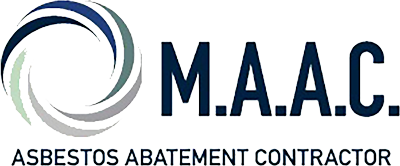What are Ceiling Tiles?
Ceiling tiles are frequently used in residential and commercial buildings as they are lightweight panels that can be easily installed. These tiles can also be used in vertical spaces, but are most frequently used on basement ceilings. They are also called drop ceilings, acoustic ceilings, or suspended ceilings. They are typically 2 ft by 2 ft or 2 ft by 4 ft. Before the Clean Air Act banned Asbestos products in 1978, ceiling tiles used asbestos. Their soft, flexible fibers were used because of their heat resistance, durability, strength, and insulation. Learn what asbestos ceiling tiles look like, how to test it, and how to remove it from your house.
The United States Clean Air Act
The United States made a federal law called the Clean Air Act (CAA) in 1973. It is aimed at protecting public health from hazardous air pollutants, which they identified asbestos as one of them. However, it wasn’t until 1978 that asbestos used for ceiling tiles was banned. However, the Environmental Protection Agency (EPA) allowed the use of existing inventory to minimize economic hardship. Therefore, buildings that had ceiling tiles installed between 1920 and the mid-1980s most likely have asbestos ceiling tiles.
Why is Asbestos Bad?
Asbestos is a hazardous air pollutant because the small fibers can be easily breathed in and lodged into a person’s lungs. When disturbed, they are very lightweight and small, making them invisible to the human eye and able to stay in the air for long periods of time. They are connected to mesothelioma, lung cancer, and other serious diseases. No amount of asbestos is considered safe and any product containing more than 1% of asbestos is banned and considered “asbestos-containing.” However, if asbestos is not disturbed and airborne, then it is not causing immediate danger within the building. Therefore, before doing any work on ceiling tiles, keep them in place undisturbed until you know if it contains asbestos or not.
What Does Asbestos Ceiling Tile Look Like?
Unfortunately, identifying asbestos ceiling tiles is difficult. The first step is to verify you have ceiling tiles from the appropriate time period:
- Home built (or ceiling to in place) between the 1920s and mid-1980s.
- Your house has tile ceilings that are square (2×2 ft) or rectangular (2×4 ft).
- The most common asbestos ceiling tiles are light in color and have pinhole markings (other designs may also have asbestos too).
- Look for a manufacturing date on the back of the ceiling tile or on extra ceiling tiles.
Unfortunately, it is not a 100% foolproof method to simply visually inspect the ceiling tiles or look at manufacturing dates. There were ceiling tiles made during this time period that did not have asbestos in it. We recommend getting your ceiling tiles inspected for asbestos if you suspect them to contain asbestos to keep you and anyone within your residential or industrial building safe.
How To Test Ceiling Tiles For Asbestos?
To test a ceiling tile for asbestos, a small sample needs to be collected. Since obtaining this sample may cause asbestos to become airborne, it is advised to do this with the proper personal protective equipment or to hire a professional. A professional is licensed to perform this initial test to verify the ceiling tile has asbestos before more costly encapsulation or removal services can be done. The sample is sent to a lab to examine it to identify if there is the presence of asbestos.
Asbestos Ceiling Tile Removal
To remove ceiling tiles with asbestos, you need to hire a professional asbestos abatement company. They are licensed asbestos removers, meaning that they will do it safely and effectively for you, and your house/building, all while keeping their employees safe with the proper personal protective equipment. A small disturbance of asbestos can contaminate your building, it is wise to have the professionals handle the asbestos ceiling tile removal. Contact us today for a quote for asbestos ceiling tile removal.
What You Can Expect From Us
Trusted & Experienced
Reliable & Fully Insured
Fully Licensed
M.A.A.C. is fully licensed with the MN Department of Health,
license AC 162 Asbestos Contractor License.
Satisfaction Guaranteed

